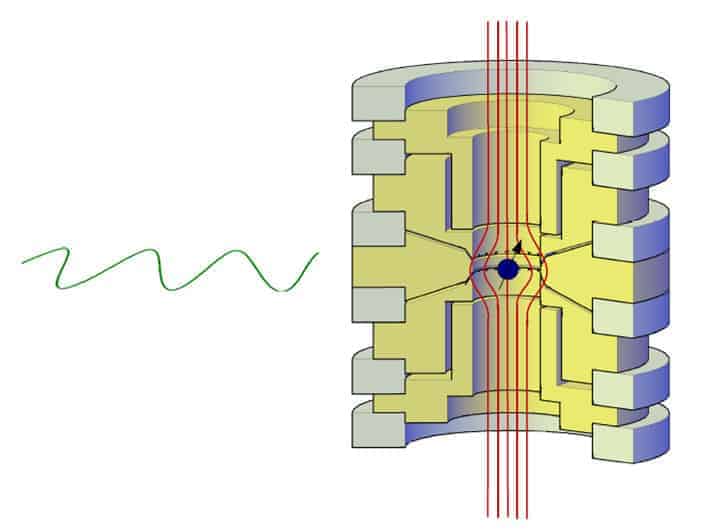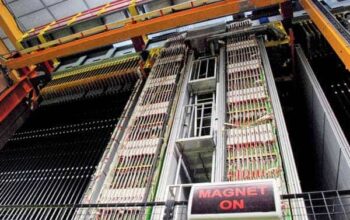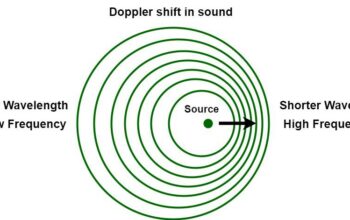The field of quantum physics continues to unveil a myriad of mysteries within the subatomic realm, and one poignant area of exploration revolves around the concept of spin, particularly in relation to protons. The phenomenon of “flipping spins” in a solitary proton not only provides profound insights into fundamental physics but also presents intriguing implications for various technological advancements in quantum computing and magnetic resonance imaging.
At its core, spin is an intrinsic form of angular momentum carried by particles, akin to how a planet rotates around its axis. For protons, which comprise the nucleus of hydrogen atoms, their spin can be conceptualized as a small magnetic moment. Protons can exist in one of two spin states, often denoted as “up” and “down.” This binary alternation forms the basis of many quantum mechanical operations and underscores the non-intuitive nature of quantum behaviors.
The quest for understanding proton spin engages both fundamental theoretical frameworks and empirical methodologies. Quantum mechanics, grounded in principles such as superposition and entanglement, allows protons to exist in a state that is not definitively one or the other until measured. This property raises questions about reality itself; does a proton truly have a defined spin, or does it only embody a potential state until observed? This duality is at the heart of quantum theory and provides fertile ground for further exploration.
Recent advancements in experimental techniques, particularly in the realm of nuclear magnetic resonance (NMR) and atomic-level imaging, have allowed scientists to manipulate the spins of individual protons with remarkable precision. When subjected to an external magnetic field, a proton’s spin can be aligned or flipped via resonance techniques. This manipulation has significant ramifications for fields as diverse as material science and medical imaging. The ability to detect and influence proton spins could lead to the development of novel imaging techniques that offer unprecedented resolution.
A major breakthrough in this domain is the implementation of such spin manipulations to foster a deeper understanding of quantum information processing. Quantum bits, or qubits, which can represent both 0 and 1 simultaneously, are essential to quantum computing. Herein lies the juxtaposition between classical bits and qubits: while classical bits occupy a deterministic state of either high or low voltage, qubits exist in a superposition of states, allowing them to perform complex calculations at speeds unattainable by traditional computers.
One of the ramifications of qubit manipulation through proton spin flipping is the enhancement of quantum coherence time—a critical factor for the functionality and stability of quantum circuits. As researchers investigate longer coherence times, the implications for quantum error correction promises to refine the fidelity and scalability of quantum processors. This is particularly exciting as the race for mainstream quantum computing technology intensifies, rendering the manipulation of individual protons not merely a theoretical abstraction but a cornerstone of future innovation.
Moreover, the concept of flipping spins embodies more than just the mechanics of quantum phenomena; it also confronts foundational philosophical inquiries regarding the nature of information and reality. At a quantum level, the act of observation itself influences the system. When researchers observe a proton’s spin state, they effectively collapse its superposition into a single definable state. This link between consciousness, observation, and quantum mechanics has stimulated debates among physicists, pushing the boundaries of not only understood physics but also the philosophical implications of existence.
The intriguing analogy can also be drawn between flipping spins of protons and the principle of duality prevalent in various dichotomous constructs. Consider the paradigm of light. Historically perceived as either a particle or a wave, light exhibits dual characteristics that evoke the mystery inherent in quantum mechanics. Similarly, the act of flipping spins introduces layered dichotomies: certainty versus uncertainty, control versus chaos, and measurement versus existence. Understanding how these facets of spin interact can unravel profound truths that govern the universe.
The relation of proton spin manipulation extends to various practical applications in the medical field, primarily in the realm of magnetic resonance imaging (MRI). The intrinsic properties of proton spins allow for the non-invasive mapping of biological tissues. Emerging technologies that leverage the flipping of spins on individual protons could yield enhanced imaging modalities, providing clinicians with improved diagnostic capabilities. As one delves into the quantum properties governing these processes, the interplay between structure and function becomes ever more vivid.
In conclusion, the investigation into the flipping of spins, particularly within solitary protons, expands far beyond mere curiosities of particle physics. As we push the boundaries of our understanding, the implications ripple through both theoretical and practical dimensions, heralding a transformative era of technological advancements and profound philosophical questions. This explication into the quantum realm not only enhances the discourse surrounding fundamental physics but reinvigorates our quest for knowledge, tantalizing us with the promise of a more nuanced understanding of the universe.










